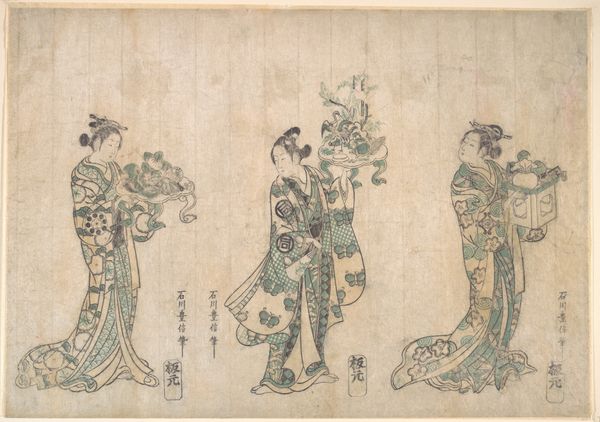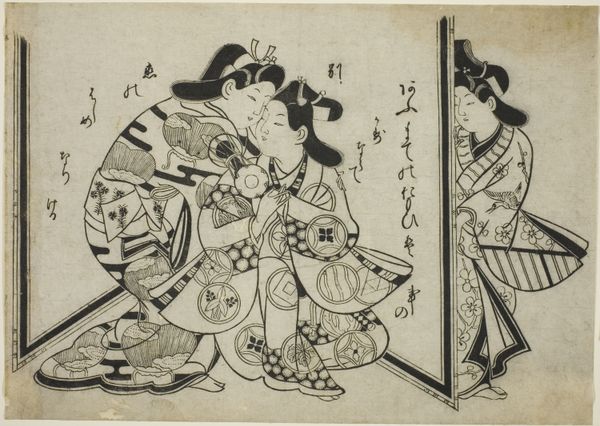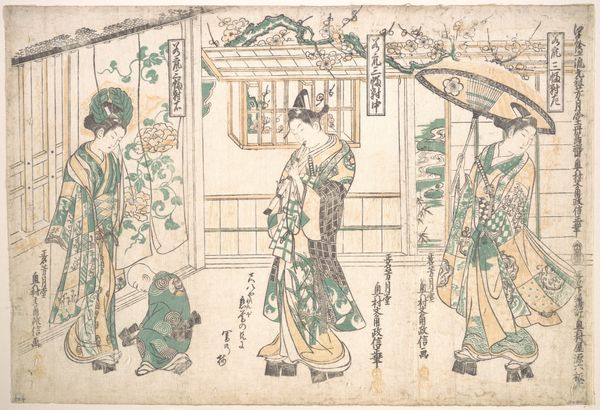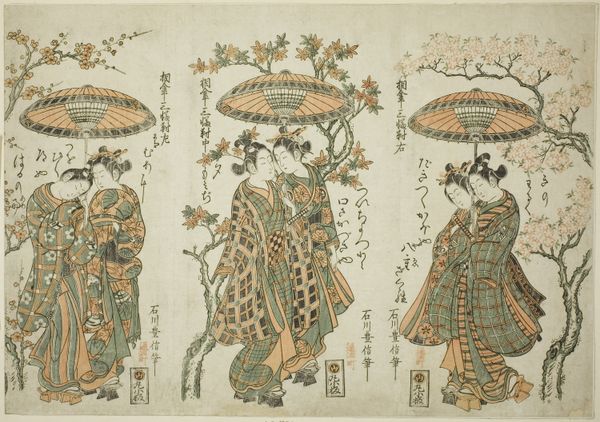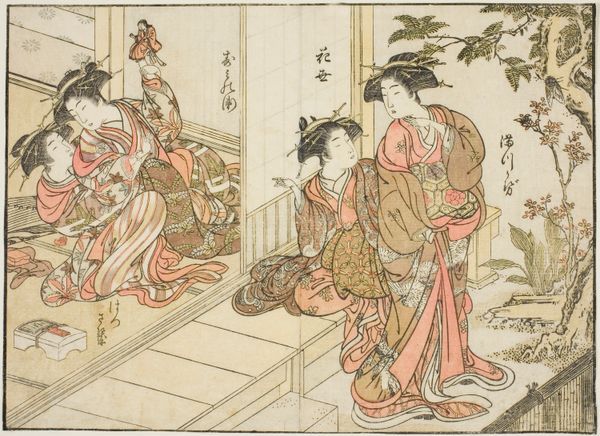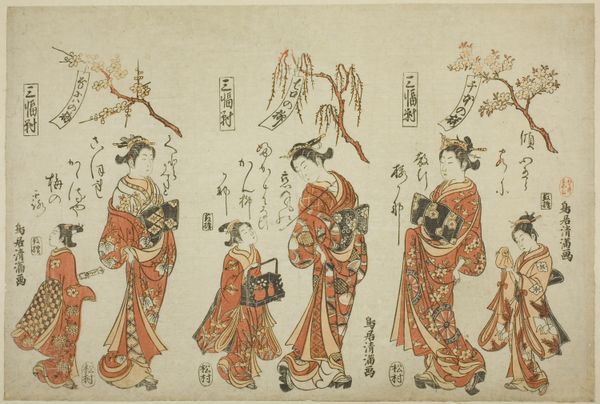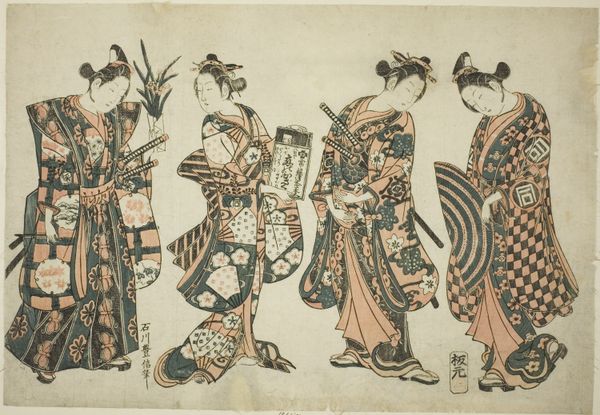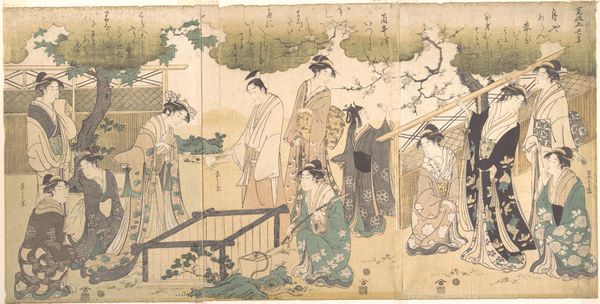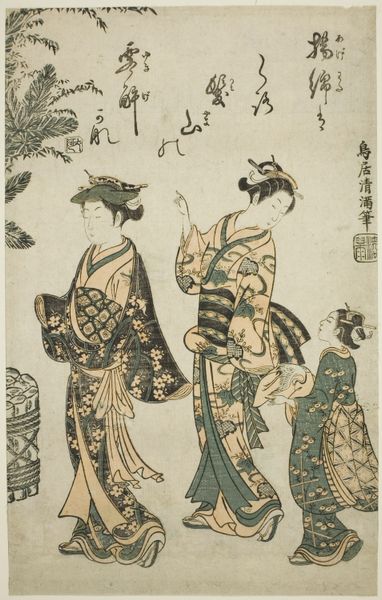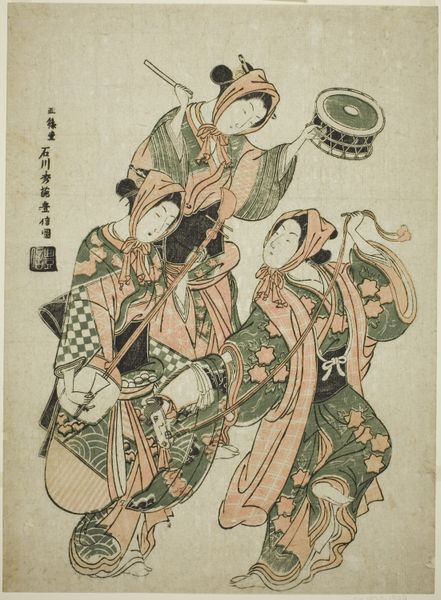
A Triptych of Fashionable No Plays (Furyu Utai Sambukutsui) c. late 1750s
0:00
0:00
#
portrait
# print
#
asian-art
#
ukiyo-e
#
figuration
Dimensions: 31.1 × 47.3 cm (12 1/4 × 18 5/8 in.)
Copyright: Public Domain
Editor: So, here's Miyagawa Shunsui's "A Triptych of Fashionable No Plays," dating back to the late 1750s. It’s a woodblock print, a classic example of ukiyo-e, held at The Art Institute of Chicago. I find the figures captivating, especially with the different scenes across the panels. What can you tell me about this work, looking at it from a cultural perspective? Curator: This print reflects the evolving role of art in 18th-century Japan. Ukiyo-e, literally 'pictures of the floating world,' was tied to the emerging merchant class and their embrace of leisure and entertainment. Note how the *No* theatre, traditionally associated with the samurai class, is being interpreted here as fashionable entertainment. How does the presentation differ from traditional depictions of No plays? Editor: It’s certainly less formal and more… intimate? Almost like a peek into a private gathering. Is that typical of how this artist positioned their work? Curator: Precisely. Shunsui, following in the footsteps of his teacher Miyagawa Choshun, often depicted scenes of everyday life and popular culture. Consider the role of the publisher in this artistic ecosystem. Prints like this were commercially produced and distributed, catering to a specific consumer base hungry for images of beauty and contemporary life. Think about the political context too. Editor: In what way does politics tie into these scenes? Curator: The Tokugawa Shogunate had strict sumptuary laws, dictating what different social classes could wear and how they could behave. These prints offered a form of visual escapism, perhaps even a subtle form of social commentary by showcasing idealized versions of fashionable life that pushed against these boundaries. Notice the patterns of the kimono. Who could wear those fabrics at the time, or would those have been forbidden? Editor: That’s such an interesting connection! It highlights how art can serve as a mirror reflecting social norms, or in this case, gently pushing against them. Thank you. Curator: My pleasure. Considering this, we now realize just how revealing this print is on socio-economic conditions and consumerism within the Asian art historical scope.
Comments
No comments
Be the first to comment and join the conversation on the ultimate creative platform.

